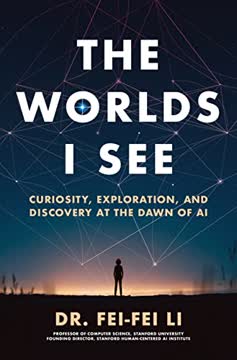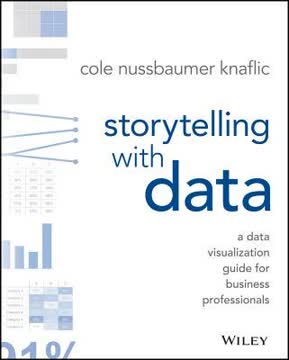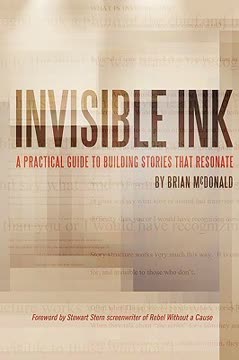Ključne točke
1. Nevidno črnilo: Skriti elementi pripovedovanja zgodb
Nevidno črnilo je pisanje pod površjem besed. Večina ljudi ga nikoli ne bo videla ali opazila, a ga bo začutila.
Moč subtilnosti. Nevidno črnilo označuje osnovno strukturo in tehnike, ki zgodbo naredijo privlačno, ne da bi bile očitno opazne. To je temelj, ki podpira vidne elemente zgodbe, kot so dialog in dogajanje.
Vpliv na občinstvo. Čeprav bralci ali gledalci teh skritih elementov morda ne zaznajo zavestno, močno vplivajo na njihovo čustveno vpletenost in razumevanje zgodbe. Obvladovanje nevidnega črnila omogoča pripovedovalcem, da ustvarijo dela, ki globoko odmevajo pri občinstvu.
Primeri nevidnega črnila:
- Razvoj likov
- Razvijanje teme
- Namigovanje na prihodnje dogodke
- Podtekst v dialogu
- Simbolične podobe
2. Okvir: Gradnja temelja vaše zgodbe
Vaš okvir je temelj, ki drži vašo zgodbo. Vse visi nanj. Vsaka vaša odločitev naj temelji na ideji dramatizacije vašega okvirnega sporočila.
Opredelitev okvira. Okvir je osrednja tema ali sporočilo vaše zgodbe. To je jedro, ki ga želite prenesti na občinstvo in služi kot hrbtenica vaše pripovedi.
Uresničevanje okvira. Vsak element zgodbe naj podpira in krepi to osrednjo temo. Liki, zapleti in dialogi naj skupaj osvetljujejo vaš okvir.
Primeri učinkovitih okvirjev:
- "Ljubezen premaga vse" v Romeu in Juliji
- "Absolutna moč absolutno korumpira" v Živalski farmi
- "Pomen družine" v Boterju
3. Ritualna bolečina: Preobrazba likov skozi konflikt
Uporabi dovolj pritiska in toplote, da premakneš kos premoga v diamant.
Potreba po konfliktu. Liki morajo premagati pomembne izzive in bolečino, da rastejo in se spreminjajo. Ta "ritualna bolečina" je ključna za smiselno razvoj likov in privlačno pripovedovanje.
Vrste ritualne bolečine:
- Fizični izzivi
- Čustvene stiske
- Moralne dileme
- Izgube in žrtve
Vpliv na razvoj lika. S premagovanjem teh ovir liki pokažejo rast in preobrazbo, kar njihovo pot naredi bolj prepričljivo in dostopno občinstvu.
4. Govoriti resnico: Moč pristnosti v fikciji
Resnica bo vedno bolj žalostna, srečna, smešna, strašljiva in globoka kot najboljša laž.
Čustvena resonanca. Pristno pripovedovanje, tudi v izmišljenih zgodbah, ustvarja močnejšo čustveno vez z občinstvom. Dotakne se univerzalnih človeških izkušenj in čustev.
Izogibanje klišejem in stereotipom. Resnica v pripovedovanju pomeni preseganje predvidljivih vzorcev in raziskovanje kompleksnosti človeške narave ter resničnih situacij.
Primeri resničnega pripovedovanja:
- Nianse motivacij likov
- Realistične posledice dejanj
- Iskrena upodobitev odnosov in konfliktov
5. Uravnoteženje moških in ženskih elementov v pripovedovanju
Stvari, ki liku fizično vplivajo, so moške in so vidno črnilo. Kako se ob tem počuti, je žensko in nevidno.
Opredelitev moških in ženskih elementov:
- Moški: Zunanji dogodki, dejanja, ki poganjajo zgodbo
- Ženski: Notranja čustva, razvoj lika
Ustvarjanje ravnovesja. Dobro zasnovana zgodba združuje oba elementa, da ustvari bogato, večdimenzionalno pripoved, ki nagovarja široko občinstvo.
Vpliv na pripovedovanje:
- Vključevanje logike in čustev
- Oblikovanje celovitih likov
- Nagovarjanje različnih okusov občinstva
6. Superiorni položaj: Vključevanje občinstva z znanjem
Superiorni položaj nastane, ko občinstvo ve nekaj, česar liki ne vedo.
Ustvarjanje napetosti. Superiorni položaj omogoča občinstvu, da predvidi dogodke, kar ustvarja napetost in čustveno vpletenost v zgodbo.
Vrste superiornega položaja:
- Dramska ironija
- Namigovanje na prihodnje dogodke
- Pripoved z več perspektivami
Povečanje vpletenosti občinstva. Z zagotavljanjem informacij, ki jih liki nimajo, lahko pripovedovalci ustvarijo občutek sodelovanja in pričakovanja, ki ohranja pozornost gledalcev ali bralcev.
7. Dialog: Več kot le besede na strani
Dialog je orodje, in kot vsako orodje ga uporabiš, ko ga potrebuješ. Lahko definira tvoj okvir, poda ključne informacije o zapletu ali razkrije lik. Če tega ne počne, ne počne ničesar.
Namen dialoga. Učinkovit dialog opravlja več funkcij v pripovedovanju, ne le prenašanje informacij med liki.
Ključne funkcije dialoga:
- Razkrivanje značilnosti in motivacij likov
- Napredovanje zapleta
- Krepitev teme zgodbe
- Ustvarjanje podteksta in napetosti
Naraven proti stiliziranemu dialogu. Dialog naj zveni naravno, a hkrati naj bo bolj namenjen in jedrnat kot vsakdanji pogovor, vedno v službi zgodbe.
8. Miti o žanru: Presegati kategorije za boljše pripovedovanje
Žanr je za dramatika nepomemben. Dramatika naj skrbi le za dramo.
Omejitve žanra. Prevelika osredotočenost na žanrske konvencije lahko omeji ustvarjalnost in vodi v formulačno pripovedovanje.
Univerzalna načela pripovedovanja. Velike zgodbe pogosto presegajo žanrske meje z osredotočanjem na univerzalne teme in prepričljive razvojne poti likov.
Prilagajanje med žanri:
- Ponovno zamišljanje klasičnih zgodb v novih okoljih
- Združevanje elementov iz več žanrov
- Osredotočanje na lik in temo namesto na žanrske klišeje
9. Vrhunec: Vrhunec rasti lika
Vrhunca je združevanje moških in ženskih elementov, ki pokaže spremembo lika ali njeno odsotnost.
Namen vrhunca. Vrhunca je najpomembnejši preizkus rasti in preobrazbe lika skozi zgodbo.
Elementi učinkovitega vrhunca:
- Situacija z visokimi vložki
- Ključna odločitev lika
- Pokaže spremembo (ali neuspeh spremembe)
- Rešitev notranjih in zunanjih konfliktov
Vpliv na občinstvo. Dobro zasnovan vrhunec prinaša čustveno sprostitev in zadovoljiv zaključek poti lika.
10. Oblikovanje podpornih zapletov za krepitev glavnega sporočila
Vse naj visi na istem okvirju.
Namen podpornih zapletov. Namesto da bi bili ločeni "stranski zapleti", naj podporni zapleti neposredno podpirajo in osvetljujejo glavno temo in sporočilo zgodbe.
Vključevanje podpornih zapletov:
- Paralelni razvoj likov, ki odraža pot glavnega junaka
- Raziskovanje različnih vidikov glavne teme
- Ponujanje kontrastnih ali dopolnjujočih perspektiv
Izogibanje motnjam. Podporni zapleti naj bogatijo glavno pripoved, ne da bi jo odvračali ali delovali nepovezano s srčiko zgodbe.
Zadnja posodobitev:
FAQ
What's "Invisible Ink: A Practical Guide to Building Stories That Resonate" about?
- Story Structure Focus: The book delves into the concept of "invisible ink," which refers to the underlying structure and elements of storytelling that aren't immediately visible but are crucial for a story's success.
- Author's Expertise: Written by Brian McDonald, an award-winning screenwriter, the book offers insights from his experience teaching story seminars at major studios like Pixar and Disney.
- Practical Guide: It provides practical tools and techniques for writers to create compelling stories and for readers to understand the art of storytelling.
- Examples and Analysis: The book uses examples from popular movies and scripts to illustrate its points, making it accessible and relatable.
Why should I read "Invisible Ink" by Brian McDonald?
- Enhance Storytelling Skills: Whether you're a writer or a reader, the book offers valuable insights into the essential elements of storytelling that can improve your understanding and craft.
- Unique Perspective: It introduces the concept of "invisible ink," focusing on the unseen elements that make stories resonate with audiences.
- Expert Advice: Learn from Brian McDonald's extensive experience in the industry, including his work with major studios and his award-winning projects.
- Practical Application: The book provides actionable techniques and exercises that can be directly applied to your writing projects.
What are the key takeaways of "Invisible Ink"?
- Invisible Ink Concept: Understanding the importance of the underlying structure in storytelling, which is often more impactful than the visible elements like dialogue.
- Story Structure: The book emphasizes the significance of a well-structured story, using the "seven easy steps" framework to guide narrative development.
- Character Development: It highlights the importance of creating characters that undergo meaningful change, often through "ritual pain" or personal challenges.
- Theme and Armature: The book stresses the need for a strong theme or "armature" that supports the entire story, ensuring all elements contribute to the central message.
What are the "seven easy steps" to a better story according to Brian McDonald?
- Once upon a time: Establish the setting and introduce the main characters, setting the stage for the story.
- And every day: Show the normal world and routine of the characters, creating a baseline for the narrative.
- Until one day: Introduce the inciting incident that disrupts the normal world and propels the story forward.
- And because of this: Detail the consequences and reactions to the inciting incident, driving the plot.
- Until finally: Lead to the climax where the main conflict reaches its peak and is resolved.
- And ever since that day: Provide a denouement that shows the new normal and the impact of the story's events.
How does Brian McDonald define "Invisible Ink"?
- Below the Surface: "Invisible ink" refers to the elements of storytelling that are not immediately visible but are crucial for the story's success.
- Story Structure: It includes the order of events, character motivations, and thematic elements that support the narrative.
- Impact on Audience: These elements are felt by the audience, even if they are not consciously noticed, making the story resonate more deeply.
- Foundation of Storytelling: Invisible ink is the foundation upon which the visible elements, like dialogue and action, are built.
What is the "armature" in storytelling according to "Invisible Ink"?
- Core Idea: The armature is the central idea or theme that the story is built around, similar to the moral of a fable.
- Structural Integrity: It acts as the skeleton of the story, providing structural integrity and ensuring all elements support the central message.
- Guiding Principle: The armature guides the storyteller's decisions, helping to maintain focus and coherence throughout the narrative.
- Dramatization: The book emphasizes the importance of dramatizing the armature, making it an integral part of the story rather than an overt message.
What role does "ritual pain" play in character development in "Invisible Ink"?
- Transformation Tool: Ritual pain is a narrative device used to transform characters, often through significant challenges or personal hells.
- Character Growth: It forces characters to confront their flaws and undergo meaningful change, making them more relatable and compelling.
- Story Impact: The pain and struggle experienced by characters enhance the story's emotional depth and resonance with the audience.
- Universal Element: Ritual pain is a common element in storytelling across cultures, symbolizing the journey from one state of being to another.
How does "Invisible Ink" address the balance between masculine and feminine elements in storytelling?
- Masculine Elements: These are external, plot-driven aspects of a story, such as action and events that move the narrative forward.
- Feminine Elements: These are internal, character-driven aspects, focusing on emotions, relationships, and personal growth.
- Balance for Resonance: The book argues that a balance between these elements creates a more truthful and resonant story.
- Universal Appeal: By incorporating both elements, storytellers can appeal to a broader audience and create more impactful narratives.
What are some of the best quotes from "Invisible Ink" and what do they mean?
- "There is no art which does not conceal a still greater art." This quote emphasizes the importance of the unseen elements in storytelling that contribute to its overall impact.
- "A wise man speaks because he has something to say; a fool because he has to say something." It highlights the importance of having a clear purpose or message in storytelling.
- "Everybody wants to go to heaven, but nobody wants to die." This reflects the resistance to change and the necessity of ritual pain for character growth.
- "Don't give me logic, give me emotion." It underscores the importance of emotional truth over factual accuracy in storytelling.
How does Brian McDonald suggest using "superior position" in storytelling?
- Audience Knowledge: Superior position involves giving the audience information that the characters do not have, creating suspense or humor.
- Engagement Tool: It engages the audience by making them active participants in the story, as they anticipate the characters' reactions.
- Suspense Creation: This technique is often used to build suspense, as the audience knows something significant is about to happen.
- Humor and Irony: It can also be used for comedic effect, as the audience is in on a joke that the characters are unaware of.
What are some common mistakes in storytelling that "Invisible Ink" highlights?
- Ignoring Structure: Overlooking the importance of a well-structured story can lead to a lack of coherence and impact.
- Lack of Theme: Failing to establish a strong armature or theme can result in a story that feels aimless or shallow.
- Character Stagnation: Characters that do not undergo meaningful change or face ritual pain can seem flat and unengaging.
- Overemphasis on Dialogue: Focusing too much on dialogue without considering the underlying story elements can weaken the narrative.
How can "Invisible Ink" help improve your storytelling skills?
- Understanding Structure: The book provides a clear framework for constructing well-structured stories that resonate with audiences.
- Character Development: It offers insights into creating compelling characters that undergo meaningful change through ritual pain.
- Theme Integration: Learn to integrate a strong theme or armature into your story, ensuring all elements support the central message.
- Practical Techniques: The book includes practical exercises and examples that can be directly applied to your writing projects.
Ocene
Knjiga Invisible Ink prejema večinoma pozitivne ocene, saj je hvaljena zaradi svojih vpogledov v strukturo pripovedovanja zgodb in tematiko. Bralci jo ocenjujejo kot jedrnato, praktično in uporabno na različnih področjih. Številni cenijo McDonaldov poudarek na "nevidnih" elementih, kot sta ogrodje zgodbe in razvoj likov. Kritiki opozarjajo na preprostost ter pomanjkanje poglobljenosti pri nekaterih temah. Vsebina, povezana z vprašanji spola v enem izmed poglavij, je sprožila določene polemike. Na splošno pa velja za dragocen vir tako za začetnike kot tudi za izkušene pisce, saj ponuja svež pogled na ustvarjanje prepričljivih zgodb.
Similar Books














